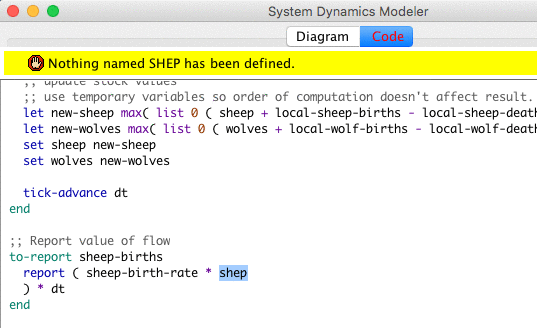
Variables within the simulation can be attributed to either the agents, patches, or both. The observer oversees the interactions that occur between the agents and the patches. In our example, the ants represent the turtles, and patches are the individual squares that make up the 2D grid.

NetLogo is a 2D world that is based on three different types of prototypical agents: patches, turtles, and the observer. By adjusting these variables, you can observe the resulting changes in consumption rate. You can change the diffusion and evaporation rates of the chemical by adjusting the DIFFUSION-RATE and EVAPORATION-RATE sliders, as well as the population. As it does so, it drops a chemical (represented by the green coloring) that affects the other ants in the colony. If an ant finds food, it carries it back to the nest. In this example, a colony of ants searches for food. When the Go button is clicked, the simulation will start, and red ants will begin moving about the world (a 2D Cartesian grid in this case). The three blue circles represent piles of food, and the purple circle represents the ant nest. When the Setup button is clicked, the Interface will change. To do this, click the Setup button in the Interface window, and then the Go button. It is easiest to see what is happening in the simulation by simply running it. (The example can be found under File > Models Library > Biology > Ants) I will use an example to elucidate the basic features typically present in a NetLogo simulation.
NETLOGO LET CODE
Supplementary to the Info window, the author can also comment on each line of code for a more comprehensive understanding of the interactions occurring. The Code window is self-explanatory it contains the heart of the simulation-the code itself. This is especially helpful for conveying the specifics of the code to an untrained audience. The Info window allows the author to provide detailed context for each simulation, and explanations for each section of code. It contains various display and plotting tools, allows the user to interact with specified variables, and features a command line. The primary function of the Interface is for visualization and interaction. NetLogo is divided into three windows: Interface, Info, and Code. In addition, NetLogo contains an extensive models library that provides sample programs from all different disciplines, which is very useful for the purpose of teaching and learning.

The language reads like English, making it relatively easy for a layperson to understand the functionality of each line of code. The interface makes it possible for users to interact with the variables within a simulation and visualize the results without having to look at the code itself.
NETLOGO LET HOW TO
For this reason, it is ideally suited for conveying the results of complex simulations to individuals with relatively little knowledge of how to program. You don’t need to know other programming languages to work with and understand the programs designed within NetLogo. It is commonly used by economists, anthropologists, and physicists, just to name a few. The language was heavily influenced by Logo, and is designed for users from many disciplines. It allows users to explore the relationship between micro-level agents and macro-level emergent behaviors that occur. It is ideal for modeling complex systems that contain hundreds or thousands of agents interacting simultaneously. NetLogo is an open source agent-based modeling tool that is relatively simple to use.


 0 kommentar(er)
0 kommentar(er)
